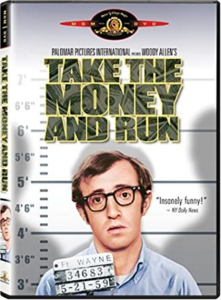A euphemism is a polite or less direct way of expressing something uncomfortable, unpleasant, or sensitive. It’s a way of using milder or more socially acceptable words or phrases to talk about something that might otherwise be too blunt or offensive. Euphemisms are often used to soften the impact of difficult or embarrassing topics in conversation or writing. For example, saying “passed away” instead of “died” is a euphemism used for being more sensitive while mentioning death. Here, let’s discover the power of euphemisms in language.

Purpose of Euphemism
Rhetoric
Euphemism may be used as a rhetorical strategy, in which case its goal is to change the valence of a description.
Politeness
Euphemisms allow people to discuss sensitive, unpleasant, or potentially offensive topics with greater politeness and consideration for others’ feelings. They soften the impact of harsh or blunt language.
Tactfulness
Euphemisms are often used to be tactful and avoid causing unnecessary discomfort or offense. They help maintain a positive and respectful tone in communication.
Social Norms
Euphemisms adhere to societal norms and conventions about appropriate or taboo language. They reflect cultural values and expectations.
Emotional Impact
Euphemisms can help reduce the emotional intensity of certain topics, making them more manageable for discussion.
Avoiding Taboos
Euphemisms can help steer clear of taboo subjects, especially in formal or public settings where direct language might be inappropriate.
Maintaining Privacy
Euphemisms can be used to respect an individual’s or a group’s privacy when discussing personal or sensitive matters.
Professionalism
In various professional contexts, such as healthcare or customer service, euphemisms may be used to maintain professionalism and decorum.
Euphemisms facilitate effective and respectful communication by providing alternative, softer expressions for potentially uncomfortable or sensitive topics.
Filmmaking and Euphemism
Film-making often incorporates euphemisms as a storytelling device to convey certain ideas, emotions, or themes in a more subtle or socially acceptable manner. Euphemism involves substituting a mild or less direct word or phrase for a potentially harsh, offensive, or blunt one. Here are a few ways in which euphemisms can be used in filmmaking:
Sensitive Topics
Euphemisms are commonly employed in films to handle sensitive or taboo subjects. For example, instead of explicitly discussing a character’s addiction, a film might use phrases like “struggles with personal demons” or “battles their inner darkness.”
Death and Dying
Euphemisms can soften the impact when dealing with death or dying in a film. Phrases like “passing away” or “moving on” are often used to describe death, making it more palatable for audiences.
Sexuality
In films, especially those with a broader audience, euphemisms are often employed to discuss sexual topics without being explicit. For instance, characters might talk about “intimacy” or “being close” instead of explicitly referring to sexual acts.
Profanity
Euphemisms are a common way to tone down profanity in films to meet certain ratings or censorship guidelines. For example, replacing strong curse words with milder expressions like “darn,” “heck,” or “gosh.”
Controversial Social Issues
Filmmakers may use euphemisms to tackle controversial social issues without inciting strong reactions. For example, addressing racism through subtle dialogue or metaphors rather than directly addressing it can effectively engage the audience in a thoughtful discussion.
Aging
Euphemisms are often used to discuss aging or the elderly more respectfully or light-heartedly. Terms like “golden years” or “senior citizens” are examples of euphemisms used in this context.
Disabilities
When portraying characters with disabilities, filmmakers may use euphemisms to describe their conditions, focusing on their abilities rather than their limitations.
Mental Health
Euphemisms can be employed to address mental health issues more delicately. Instead of explicitly stating a character has a mental illness, a film might depict their struggles through metaphorical imagery or symbolic storytelling.
War and Violence
Euphemisms can be used to describe acts of war and violence less graphically. For example, referring to “collateral damage” rather than civilian casualties.
Addiction
When depicting addiction, filmmakers may use euphemisms to highlight the character’s struggle without explicitly mentioning the substance involved. Phrases like “dependency” or “substance abuse” can be employed.
Euphemisms in film can add complexity to storytelling, allowing filmmakers to explore challenging themes and emotions while respecting cultural sensitivities and censorship requirements. They can also engage the audience’s imagination and encourage them to think critically about the addressed subjects.
How to Write Effective Euphemisms for Movies?
Creating effective euphemisms for movies requires a delicate balance of creativity, context, and audience sensitivity. Here are some steps to write them effectively:
Understand the Context
First, thoroughly understand the context and scene in which the euphemism will be used. Consider the characters, their relationships, and the tone of the movie.
Character Voices
Ensure that the euphemisms align with the characters’ personalities and backgrounds. What might be a euphemism for one character may not work for another.
Tone and Genre
Consider the tone and genre of the movie. A comedy might employ euphemisms for humor, while a drama might use them for emotional depth.
Subtlety
Euphemisms should be subtle, providing a softer or more acceptable alternative to direct language. They should convey the intended message without being overly explicit.
Audience Sensitivity
Be mindful of the target audience’s sensibilities. What might be acceptable in one context may not be in another, so gauge the audience’s expectations.
Word Choice
Choose words that fit the euphemistic intent. For example, “passed away” is a gentler alternative to “died.”
Practice
Experiment with different phrasings and test them in the scene’s context. Sometimes, minor tweaks can make a euphemism more effective.
Review and Feedback
Seek audience feedback to ensure that the euphemisms work as intended and do not cause confusion.
Editing
Finally, be prepared to edit and refine the euphemisms as the movie’s production progresses. Sometimes, changes in context or character development may necessitate adjustments.
Why Filmmakers Use Euphemism?
Filmmakers use euphemisms as a storytelling tool to address sensitive or potentially offensive subjects with tact and consideration. Euphemisms can enhance character development, establish tone, and maintain audience comfort. They offer a way to navigate challenging themes, add humor, and respect cultural norms, making films more engaging and inclusive while adhering to various content guidelines. Euphemisms help maintain audience comfort, add depth to character development, and establish the tone of a film. They can also serve as a creative tool for humor and subtext while adhering to cultural and regulatory considerations. Ultimately, filmmakers employ euphemisms to enhance storytelling, make films more relatable and engaging, and navigate the complexities of the human experience on screen.
Impact of Euphemism On Films
Nuanced Storytelling
Euphemism allows filmmakers to explore complex themes and characters nuancedly, enabling a deeper connection between the audience and the narrative.
Universal Appeal
By employing euphemisms, filmmakers can make their stories more accessible to a broader audience, transcending cultural and linguistic barriers.
Cinematic Aesthetics
Euphemistic language can contribute to the overall cinematic aesthetics, creating a unique atmosphere and style for the film.
Timelessness
Films that use euphemisms effectively tend to age well, as the underlying themes and emotions they convey remain relevant over time.
How Powerful is Euphemism in Films?
Navigating Sensitivity
Euphemism allows filmmakers to address sensitive or taboo topics without offending or alienating their audience. Using subtler language, they can explore themes like death, illness, or addiction in an emotionally impactful way without being overtly graphic.
Character Development
Euphemisms can be used to reveal character traits, motivations, and internal conflicts. A character’s choice of words can say a lot about their personality, values, and psychological state.
Enhancing Subtext
Euphemistic dialogue can be a potent tool for conveying subtext. What remains unsaid can be just as important as what is spoken. Viewers are left to interpret hidden meanings, adding depth to the narrative.
Emotional Impact
Euphemisms can elicit a powerful emotional response from the audience. They can soften the blow of harsh truths or intensify the impact of a revelation.
Euphemism in Animated Films
Euphemisms are not only used in live-action films but are also prevalent in animated films. Here’s how they are employed in the world of animation:
Child-Friendly Language
Many animated films, including children, are designed for family audiences. Euphemisms help ensure that the language and themes are appropriate for young viewers. For example, characters might say “knocked out” instead of “killed” to convey a less violent tone.
Comic Relief
Euphemisms can add humor to animated films. Characters might use amusing or exaggerated euphemisms to create comedic moments or defuse tense situations.
Character Traits
Euphemisms can reveal character traits. A character who consistently uses creative euphemisms might be seen as imaginative, while another who avoids euphemisms might be straightforward and practical.
World-Building
Animated films often take place in fantastical or imaginative worlds. Euphemisms can contribute to world-building by introducing unique, in-universe euphemisms that reflect the culture or environment of the animated world.
Cultural Sensitivity
Animated films have global audiences, so filmmakers may use euphemisms to respect cultural norms and avoid misunderstandings or offenses across different regions.
Subtext and Symbolism
Euphemisms can carry subtext or symbolism in animated films. They might be used metaphorically to convey deeper meanings or explore complex themes.
Lesson Delivery
Euphemisms can be employed to convey important life lessons or morals in a gentle and approachable manner, which is often a key element in children’s animated films.
Overall, euphemisms in animated films serve similar functions as in live-action films but are adapted to suit the specific needs and demographics of the audience. They contribute to storytelling, character development, and humor while ensuring the content is suitable for all ages.
Euphemism And Harry Potter
The “Harry Potter” book and film series by J.K. Rowling features various instances of euphemism, often to address or soften sensitive or potentially uncomfortable subjects, especially considering the series primarily targets young readers. Here are a few notable examples:
“He Who Must Not Be Named” (Voldemort)
The primary antagonist in the series, Voldemort’s name is often referred to euphemistically due to the fear of speaking it. The characters typically use phrases like “He Who Must Not Be Named” or “You-Know-Who” to avoid saying his name directly.
“Passed Away” (Death)
The concept of death and mortality is a recurring theme in the series, and euphemisms are frequently used when discussing the characters’ deaths. For instance, instead of saying someone has “died,” characters might say they’ve “passed away” or “gone.”
“Unpleasant End” (Unpleasant Death)
When referring to a character who has died under unpleasant or tragic circumstances, the term “unpleasant end” is used as a euphemism to soften the description.
“Going to the Bathroom” (Using the Toilet)
In everyday life, characters are sometimes depicted as using euphemisms to describe common activities, such as when students at Hogwarts say they are “going to the bathroom” rather than explicitly mentioning using the toilet.
“Happily Disposed” (Dead)
Characters in the wizarding world occasionally use this euphemism to describe someone who has passed away.
These euphemisms contribute to the tone of the series, particularly in handling dark or sensitive subjects in a way that is both accessible and age-appropriate for its young readership. They also help build the rich and imaginative world of Harry Potter, where language and terminology are integral to the storytelling.
An Analysis Of Euphemism in Film Language
Euphemisms in film language are a vital bridge between storytelling and the audience’s sensitivities. They enable filmmakers to navigate challenging or potentially offensive themes tactfully and respectfully, making the content accessible to a broader range of viewers. Euphemisms soften the impact of harsh language, add depth to character development, and provide comic relief. They adapt to cultural contexts, enhancing world-building, and sometimes carry subtext and symbolism to create a more intellectually engaging cinematic experience. In a diverse and ever-evolving world, euphemisms help balance artistic expression and ethical considerations, ensuring films remain relatable and emotionally resonant for audiences.
A Few Examples of Euphemism In Movies
Casablanca (1942)

In this classic film, the phrase “round up the usual suspects” is used euphemistically to imply that innocent people will be arrested and possibly killed.
CASABLANCA – Bande Annonce Officielle (VOST) – Humphrey Bogart / Ingrid Bergman
[Jwatchnow link=”https://www.youtube.com/watch?v=5CbPouhVPgI” watchon=”YouTube Movies”]
The Shawshank Redemption (1994)

The film uses the term “institutionalized” to euphemize the psychological trauma experienced by long-term prisoners.
The Shawshank Redemption (1994) Official Trailer #1 – Morgan Freeman Movie HD
[Jwatchnow link=”https://www.youtube.com/watch?v=XLPXI8KUztg” watchon=”YouTube Movies”]
Schindler’s List (1993)

The euphemism “resettlement” conveys the horrifying reality of the Holocaust, where Jews were sent to concentration camps.
Schindler’s List 25th Anniversary – Official Trailer – In Theaters December 7
[Jwatchnow link=”https://www.amazon.com/Schindlers-List-Liam-Neeson/dp/B00BEN0V8S/ref=sr_1_1?crid=V3HQOGHBLLC8&keywords=Schindler%27s+List+%281993%29&qid=1698102345&sprefix=schindler%27s+list+1993+%2Caps%2C694&sr=8-1″ watchon=”Prime Video”]
American Beauty (1999)

The rose petals covering a character’s naked body symbolize desire, longing, and the illusion of perfection.
American Beauty (1999) Theatrical Trailer
[Jwatchnow link=”https://www.youtube.com/watch?v=f8gzOzzBlIg” watchon=”YouTube Movies”]
The Big Lebowski (1998)

The repeated phrase “The Dude abides” is a euphemism for the character’s laid-back philosophy on life.
Are Innuendo and Euphemism the Same?
Innuendo, a clever linguistic device, thrives on subtle and indirect suggestions, often with a sly or suggestive undertone. In cinema, innuendo is a powerful tool for conveying unspoken desires or hidden agendas. A classic example is the film “Casablanca,” where the famous line “Here’s looking at you, kid” carries a depth of affection and longing beyond the words themselves. Same way, in “Basic Instinct,” Sharon Stone’s character employs seductive innuendos to manipulate those around her, captivating audiences with the unspoken tension. Innuendo’s ability to convey hidden meanings adds layers of intrigue and complexity to storytelling on the silver screen.
What is Dysphemism?
Dysphemism is a linguistic phenomenon where harsh or derogatory language is used to describe something, often in stark contrast to its more neutral or positive counterpart. It involves deliberately choosing offensive or unflattering terms to create a negative impression or provoke a reaction. In cinema, dysphemism can be a powerful tool for character development or storytelling. For instance, in the movie “A Clockwork Orange,” the characters use derogatory language to emphasize the dystopian setting. Similarly, in “Full Metal Jacket,” the drill instructor employs dysphemism to break down and dehumanize recruits. Dysphemism’s impact lies in its ability to convey a raw, unfiltered portrayal of characters and situations.
Dysphemism Vs. Cacophemism
Dysphemism and cacophemism share similarities in using harsh or offensive language to convey negative or unappealing aspects of a subject. However, they are not precisely the same. Dysphemism is about choosing words that create a negative impression or provoke a reaction, but it doesn’t necessarily focus on the harshness of the sound of the words.
Cacophemism, on the other hand, specifically emphasizes the harsh or discordant sound of the words used. It is more about the unpleasant or grating quality of the language rather than solely the negative meaning it conveys. It is the opposite of euphemism, which softens or sugarcoats words. In movies, cacophemism can be a potent tool for characterization and storytelling. A prime example is Quentin Tarantino’s “Pulp Fiction,” where characters frequently employ vulgar and offensive language to create a gritty, provocative atmosphere. Another example of cacophemism is the film “Glengarry Glen Ross,” which showcases cacophemism through its characters’ aggressive and profanity-laden dialogues, emphasizing the cutthroat world of real estate sales. Cacophemism serves to evoke strong emotions and enhance authenticity in cinematic narratives.
Final Thoughts
As an important part of the culture, the film mirrors and depicts people’s real lives in refined and condensed language. In film language, words don’t convey all their connotations between two sides. For example, they may use euphemisms so that the other person can consider and understand the “implication”. To understand euphemism in film language, it is necessary to analyze the words in the specific context of the film by context, thus helping us better understand euphemism’s effect in the film’s specific context.
Videos
Learn euphemisms with movie quotes – English vocabulary lesson
Gilmore euphemisms for “death”














